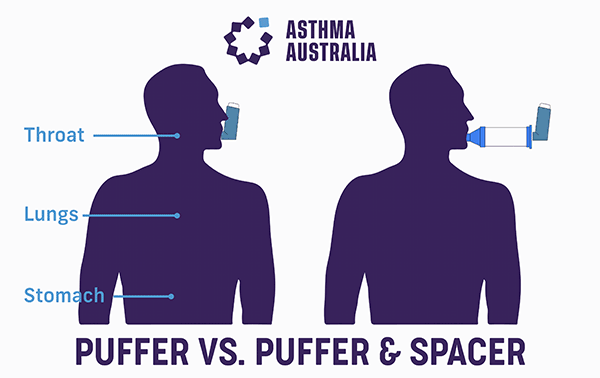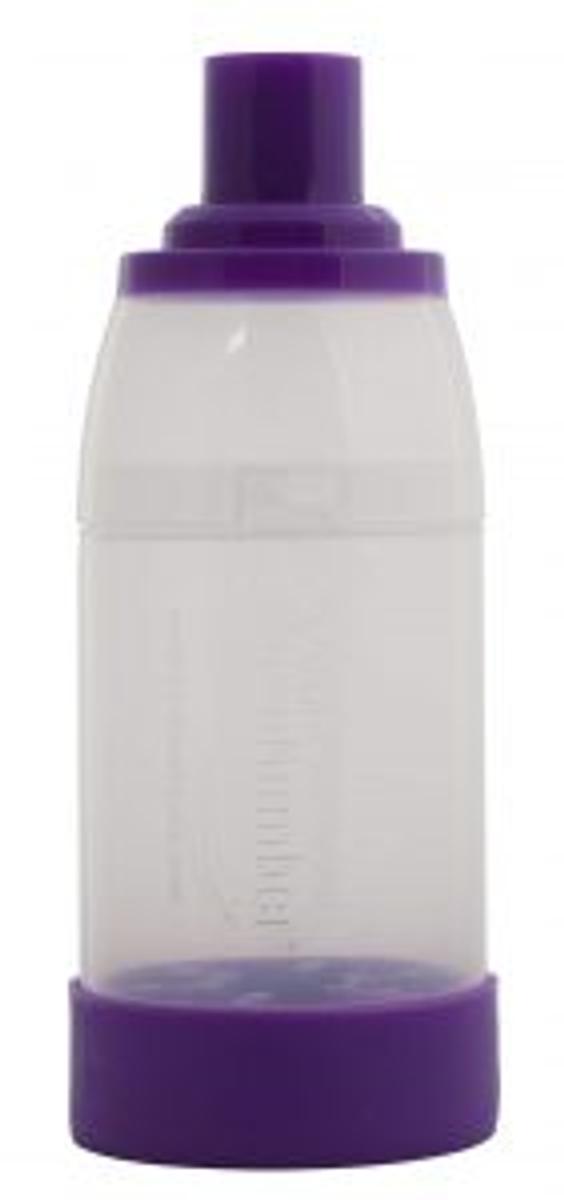Medical
Nurse Ruth

Medical
Nurse Ruth
Spacers / Nebuliser
Sometimes your doctor or health professional might suggest using an additional device to make taking your medicine easier or more effective. Spacers and nebulisers are the most common devices used and you can read more about them here.




A spacer is used to make it easier for people with asthma to inhale their medicine. It is a plastic container with a mouthpiece at one end and a hole for the inhaler at the other. If you have a very young child you will need to fit your spacer with a mask for effective use. Spacers can only be used with puffer style inhalers. The medicine is ‘fired’ from the puffer into the spacer and is then inhaled.
Adults and adolescents are recommended to always use a spacer with their puffer. All children should use a spacer to take their medicine, for both reliever and preventer puffers. Using a spacer with your reliever medicine in an asthma flare-up is as effective as or even better than using a nebuliser. It’s faster, easier, and less likely to cause side effects. Check our techniques page for tips on how to use your spacer correctly.
You can get a spacer from your local pharmacy, usually from around $15. There are different types of spacers, so you can choose which one suits you best. Some of them are ‘disposable’ which means they are made from plastic or paper, and only last a short time. These cannot be cleaned. They work well, but do not use them for any longer than advised by the manufacturer.
Make sure you wash your spacer before you use it, and about every month (or when you’ve been unwell).
Some places will have a spacer ready just in case there is an asthma emergency. This is common in schools, children’s services and some sporting clubs or workplaces. Asthma Australia recommends that all spacers should be used by one person only. This means that once a spacer has been used, it should be given to the person who used it, or thrown away. They should not be washed and reused for another person. Spare spacers should always be available to restock the Asthma Emergency Kit.
A nebuliser is a m


achine that converts liquid medicine into a fine mist that can then be inhaled. They used to be used quite commonly, in clinics and hospitals and at home but they’re not so important any more since it has been demonstrated that inhaled medicines through spacers are just as effective. Nebulisers need careful cleaning and maintenance. Nebulisers can still be employed by health services when it is deemed that oxygen supplementation is required. Individuals who find inhaler devices too difficult to use or those who have anatomical reasons or who need oxygen during their medicine administration may find nebulisers useful. For most people, even when they’re having a flare-up, using a spacer with your reliever medicine is as effective as, or even better than, using a nebuliser; and it’s faster and easier.
(Sourced from Asthma Australia website)